Ivo Mayr part2: Passanten
Following text (part1 and part2) and photographs by Ivo Mayr.
Passanten
The series “Passanten” is the third and final of the series with the theme of Antigravity. It originated in the context of a grant with which I was to create an artistic portrait of the town of Koblenz (a little, idyllic town along the Rhine River).
The character of the town is determined through several factors: its geography and architecture, but more so through the people who live in it. Since I knew neither Koblenz nor anyone within the town when the project commenced I decided to first become familiar with the town and its inhabitants. I took a room in shared accommodation, bought a bicycle and rode around the town and surrounding landscapes. Soon I felt like part of the town and was not swimming on the surface.
I developed a concept with which I could combine my passion for antigravity and my interest in the people of the city. I decided to actively approach people and positioned myself in exposed places that significantly contribute to the image of the city. I then asked people passing by for a staged portrait. They were people who got my attention through their clothes, charisma, pose etc. I portrayed them off the ground, hanging on walls, trees and lanterns. Like lost items who are placed clearly visible to everyone where they have been found (eg a glove on a fence). Through placing the people at typical locations of the town I could integrate documentary and historical aspects in a casual way. This way new perspectives on familiar places could be gained. This included the historical centre with its picturesque streets as well as the “eyesores /blemishes of Koblenz” which are just as typical for the town.
In my previous work I used people more like figurines who expressed a state through their pose or posture, the individuality of a person didn’t matter. This became very different in the series “Passanten”: the people are main actors. They give distinction to the picture with their uniqueness and distinctiveness. Since I never knew who would cross my path a lot of the significance of my work comes from chance and the spontaneity of the people passing by. Even though I could decide who I would find interesting and which pose they should take on the photo I could not manipulate their appearance (Styling, Charisma).
When I commenced my work it was initially uncomfortable to address people on the street and ask them to be in a photograph in which they would hang on a wall. I felt like a sales representative who wants to sell something. But most people were very open and interested in my work. An example photograph which I showed to everyone eliminated all doubt and suspiciousness. The positive feedback really supported me in my work and I became more confidant.
In this manner I got to know lots of different people who told me a lot about them and their city. Not all pictures were created directly at first contact. I had to ring up two “celebrities of Koblenz” to make a date over the phone and with one extended family I had to establish trust over several weeks before I could take a picture of three of eight siblings.
After a while I came to a certain fame. This went as far as some people contacting me to let me know about “beautiful motives” that I definitely had to photograph. On person emailed that he had to show me something that was of a sure interest to me. From his balcony he showed me a building that had fallen down in the Second World War and had since wrecked the view onto his garden He was hoping, I think, that as a official photographer of the town I could inform the public about this situation. The ruins in his garden were of no interest to me; he as a person however was of great interest. He was very surprised when I asked him whether I could portray him hanging on a wall. He was pleased to participate even though it was a difficult enterprise given his weight of 150kg.
I was very positively surprised about the readiness of older people to participate in my pictures because it was physically challenging to be set in scene. The oldest person, a lady, was 92 years old.
I also formed a very nice acquaintance with an elderly man whose profession is to manufacture umbrellas. It is a trade that was passed on through many generations within his family. After I took photos of him I visited him several times in his workshop which seemed to be from a different time. While sharing a glass of local wine he was telling me interesting insider stories of his city, Koblenz.
My favourite scene is an elderly lady with sunglasses, a tiger blouse and perfectly styled hair. She is hanging on a red wall in one of the picturesque alleys of Koblenz. She was very obvious within a tourist group that was taking a guided tour of the town. “You have to take a photo of this tiger-lady” I told myself. Without hesitation she agreed to the picture. We were finished within 2 minutes and just as quickly she disappeared amongst all the other tourists – there is no way I could invent a person like that!
At last I would like to talk about the implementation and the aesthetics. To create the impression of people hanging of a wall in a photorealistic way I could not get around digital manipulation. Whilst the series “Leichtkraft” didn’t need any editing (the effect was merely created through rotation) and the series “StadtLandFlucht” was only partly edited, the series “Passanten” had to be entirely digitally manipulated in order to implement my ideas. Each picture is compromised of three photos that were taken within a very short time from the same spot with a tripod. The final product is created from these 3 pictures in a very work-intensive process with Photoshop. My aim was to enhance the absurd moment of the motive through an “aesthetic of the casual”: surrounding and light make the picture look as if it came out of an everyday situation. The absurd moment is also enhanced through my decision to work with “normal” people rather than models: in the end old or overweight people who defy gravity and hang on a wall are a lot more comical than young, athletic models.
I often get asked how it was possible to hang the people on the walls. Then everyone is surprised about the digital manipulation as the picture shows no faults that would indicate it is a collage like for example a badly construed shadow. My requirements of a picture are only fulfilled when I manage to create these doubts in the viewer. Therefore I purposely work without complicated staged light situations as they destroy the natural character of the picture and create an artificial impression which would reduce the irritation that I wish to create: the observer would question the picture a lot less if he could readily see it was artificial.
Read the first part of the article: Leichtkraft and StadtLandFlucht by Ivo Mayr and visit Ivo Mayr website for more great content.
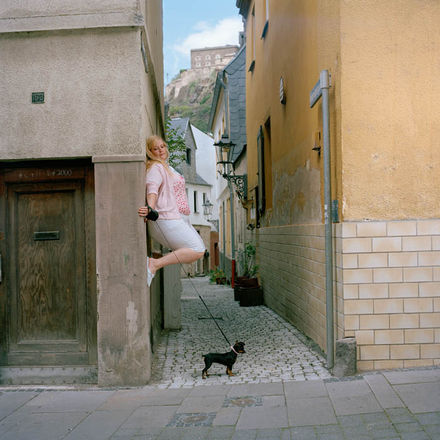
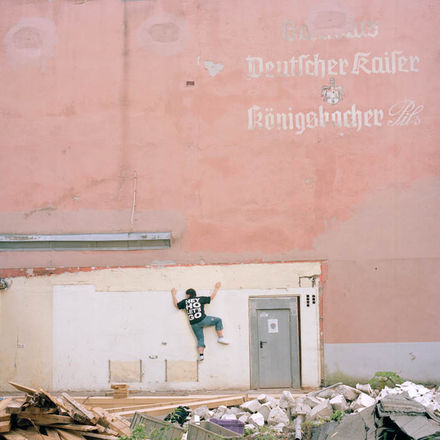
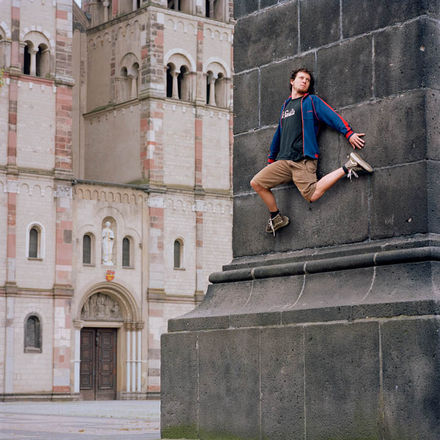
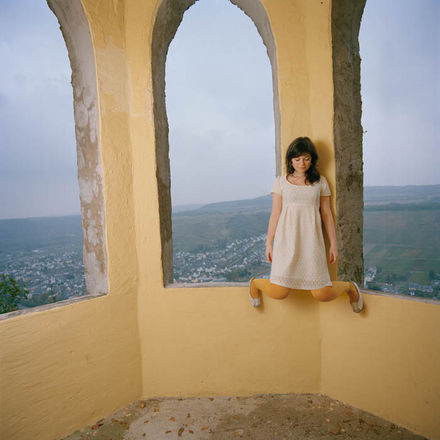
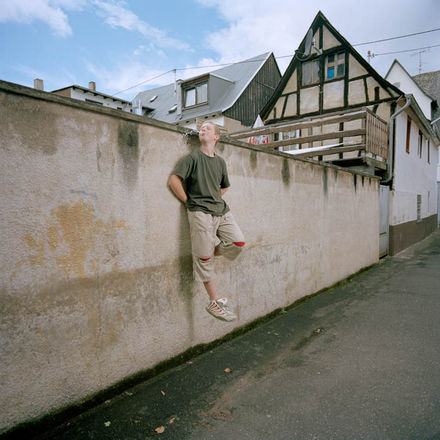
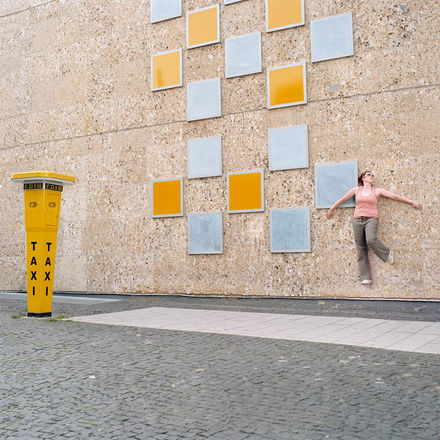
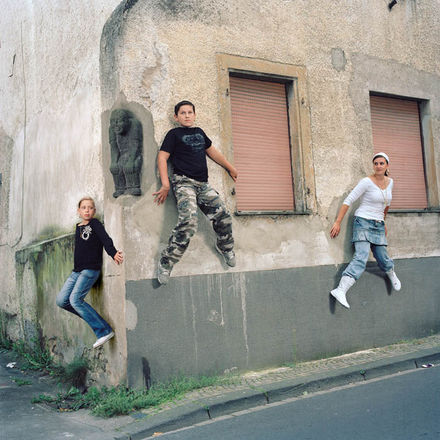
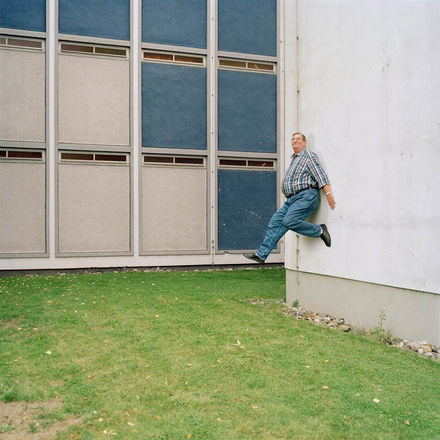
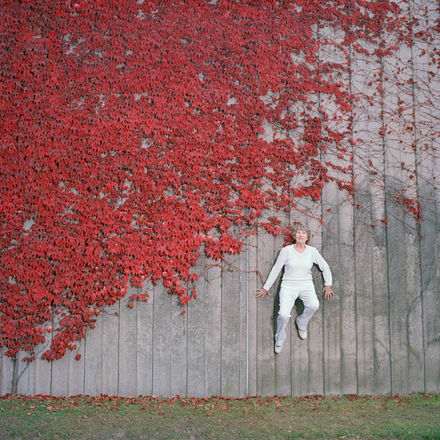
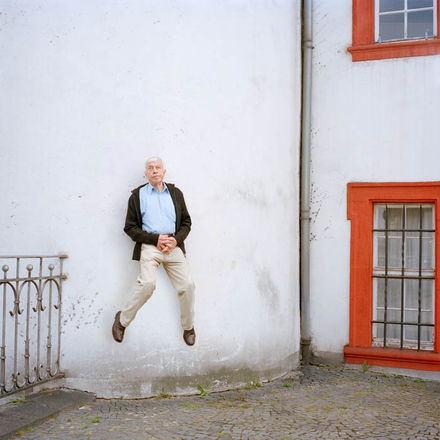
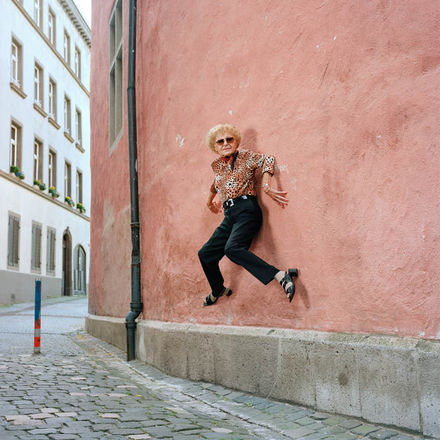
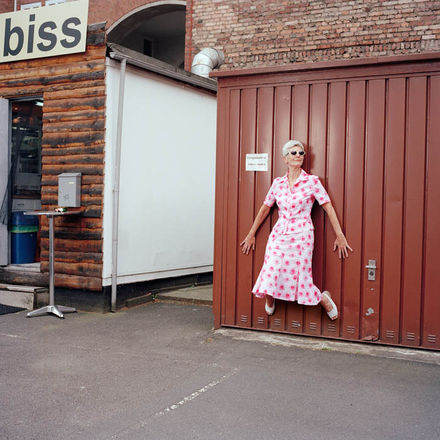
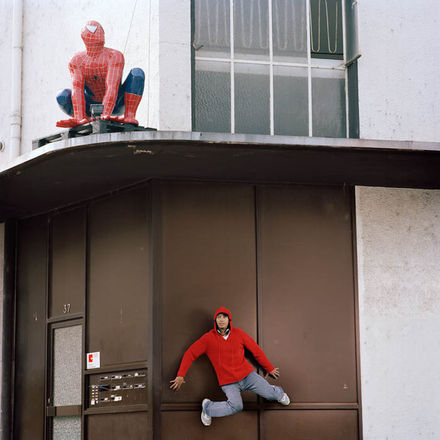
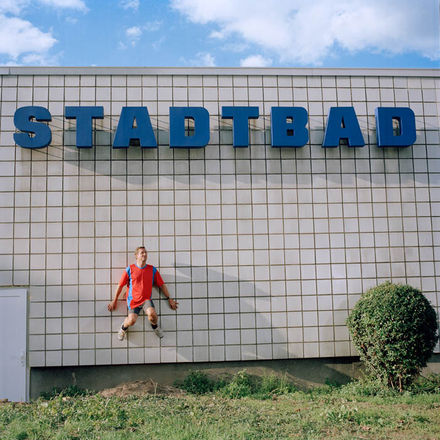





Ivo Mayr part1: Leichtkraft and StadtLandFlucht
said, May 25, 2010 @ 10:02 am :
[...] text (part1 and part2) and photographs by Ivo [...]